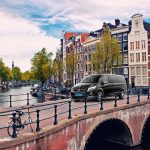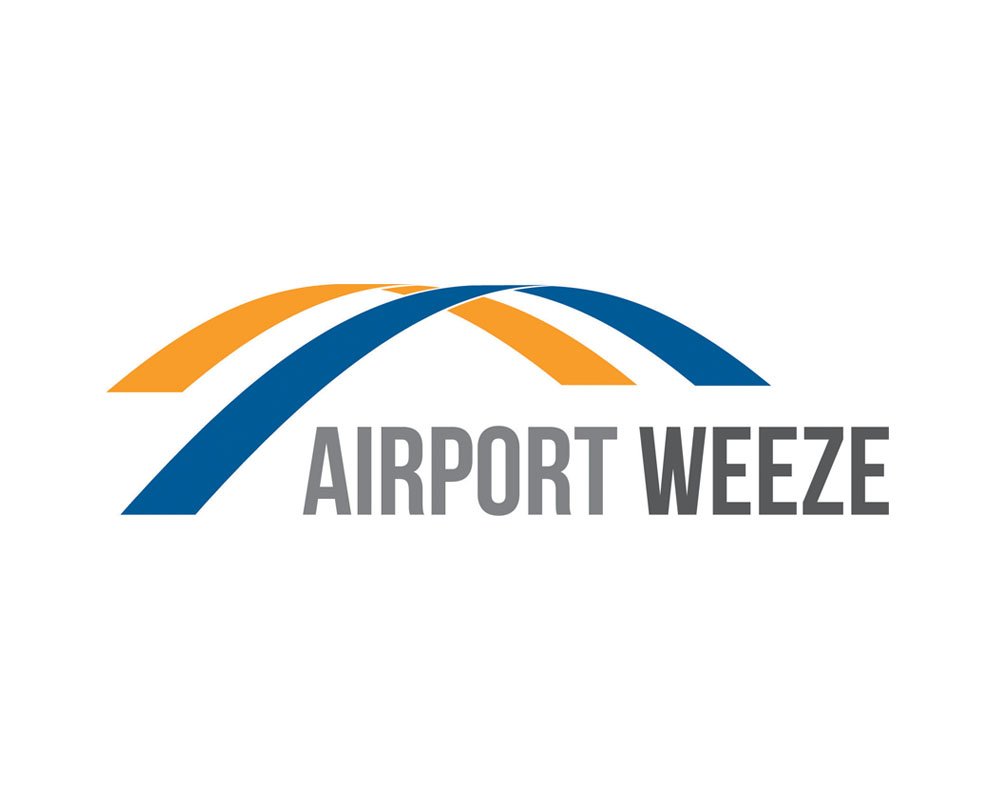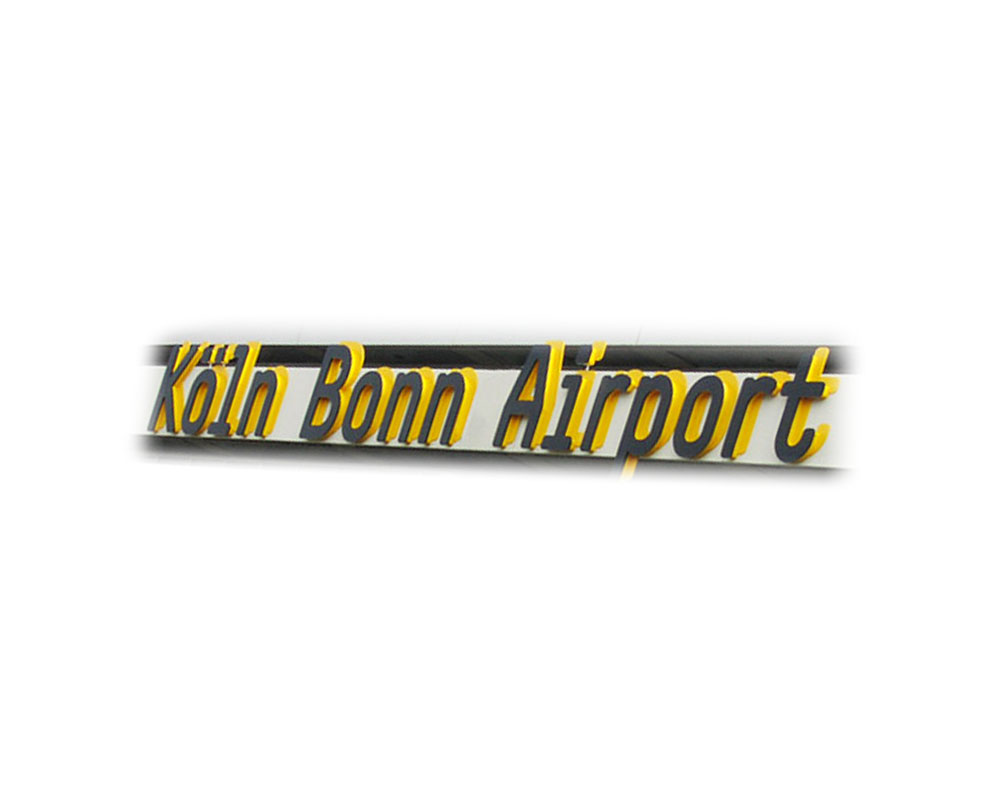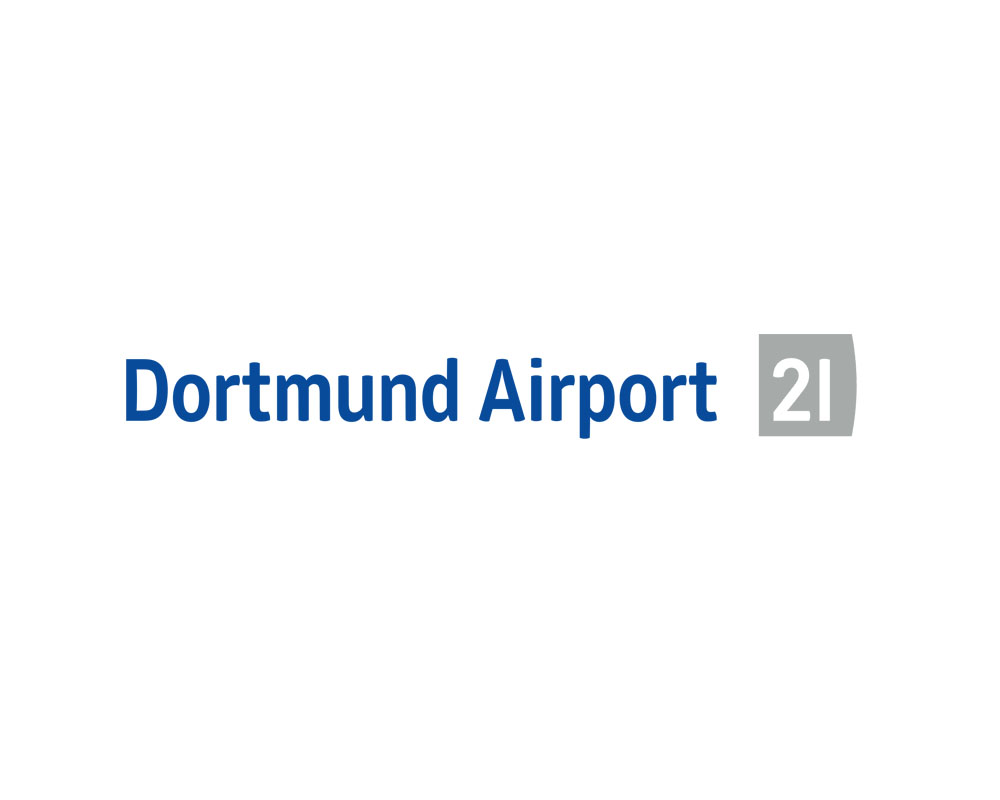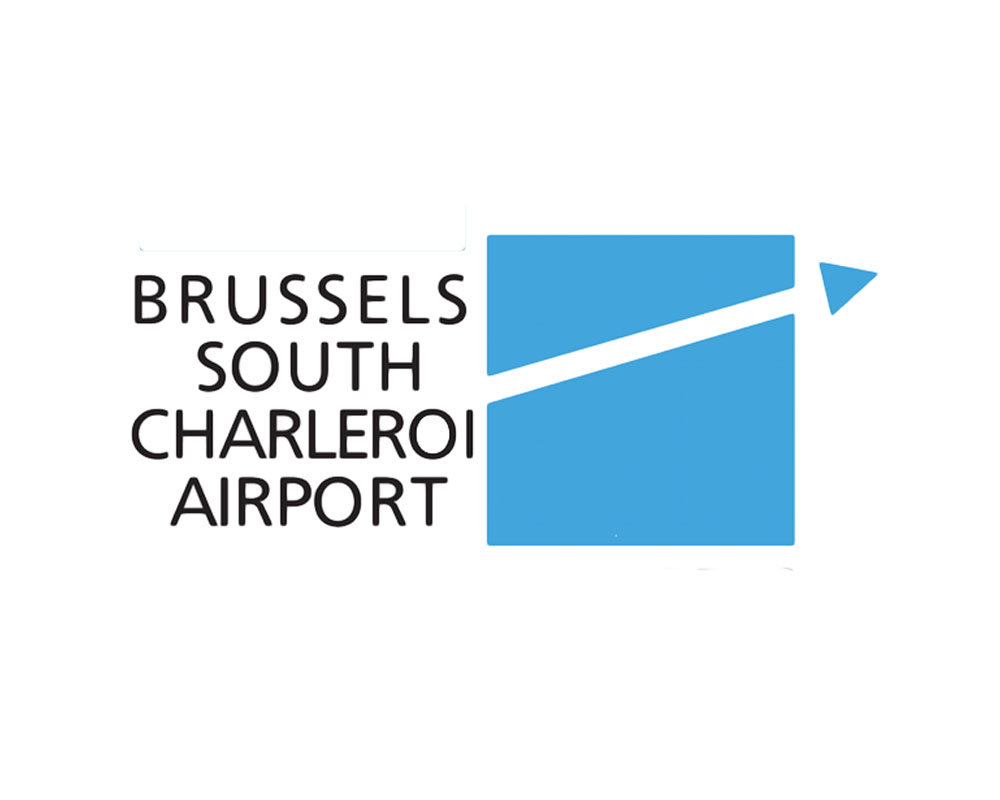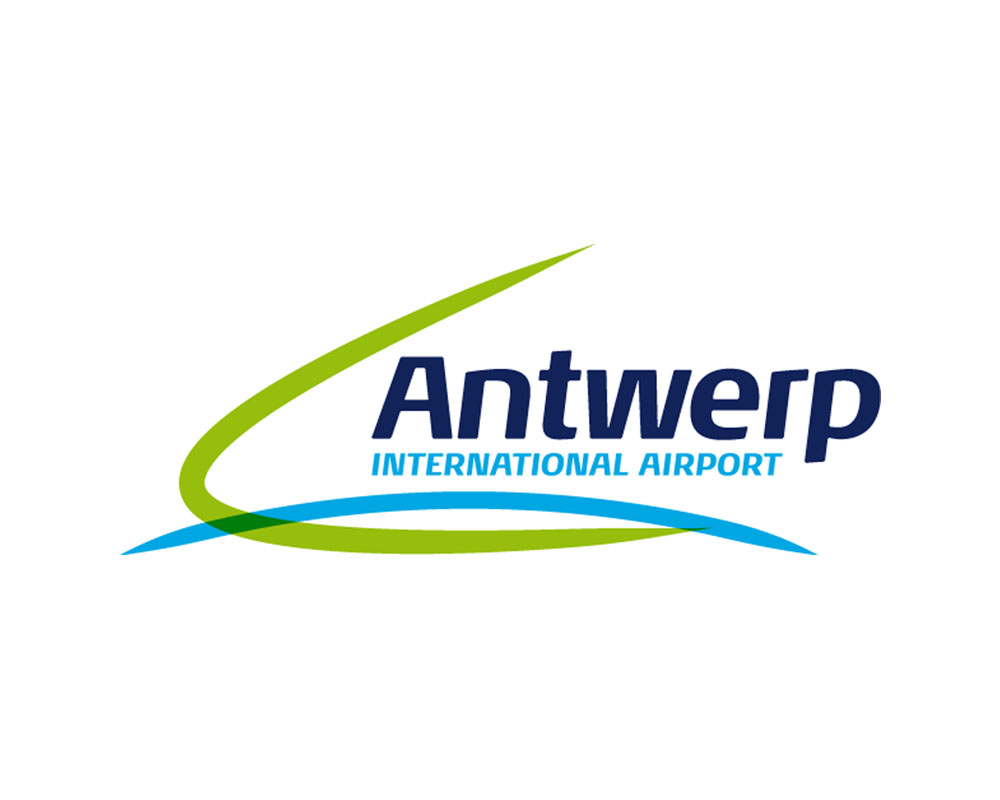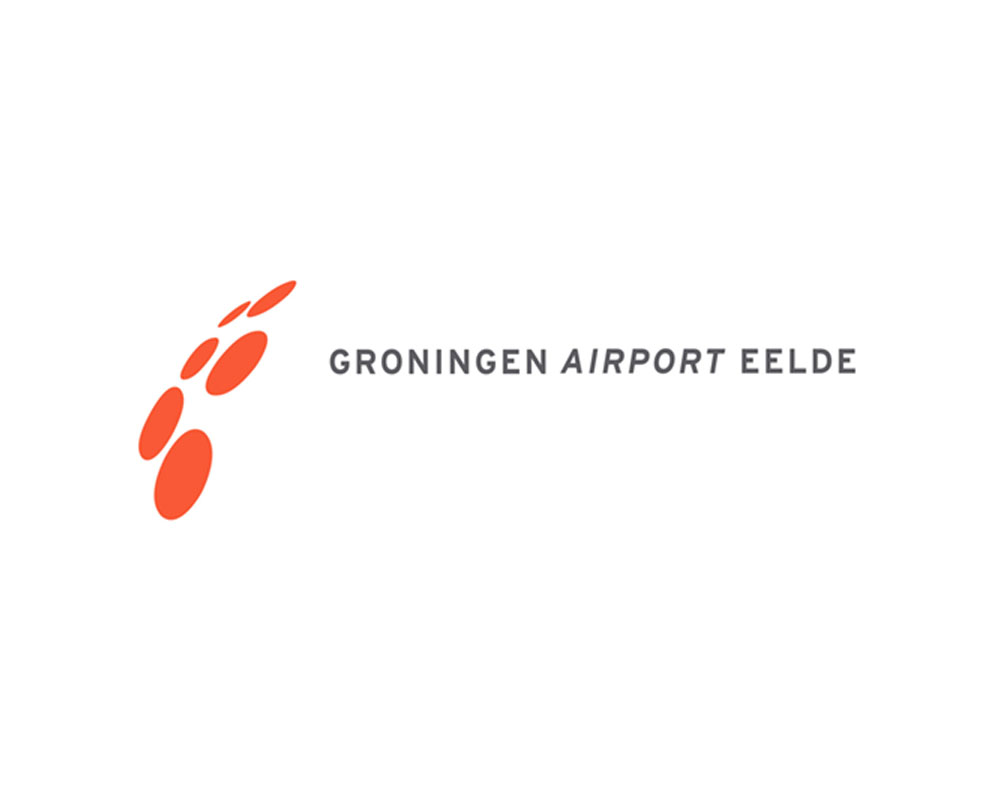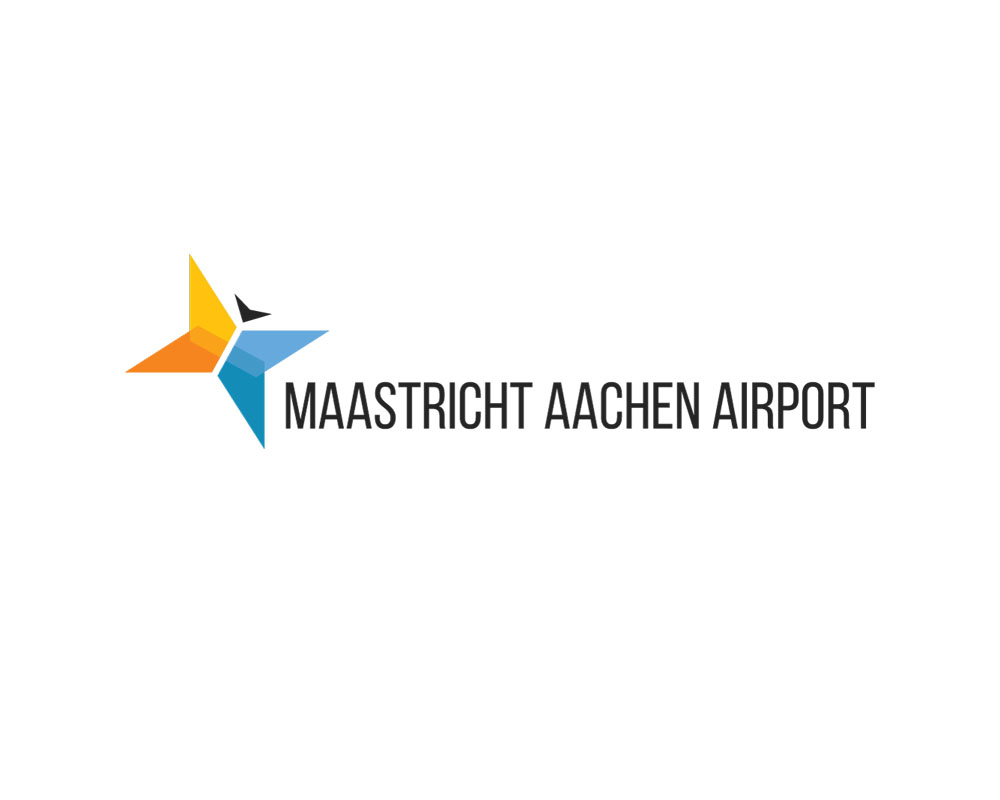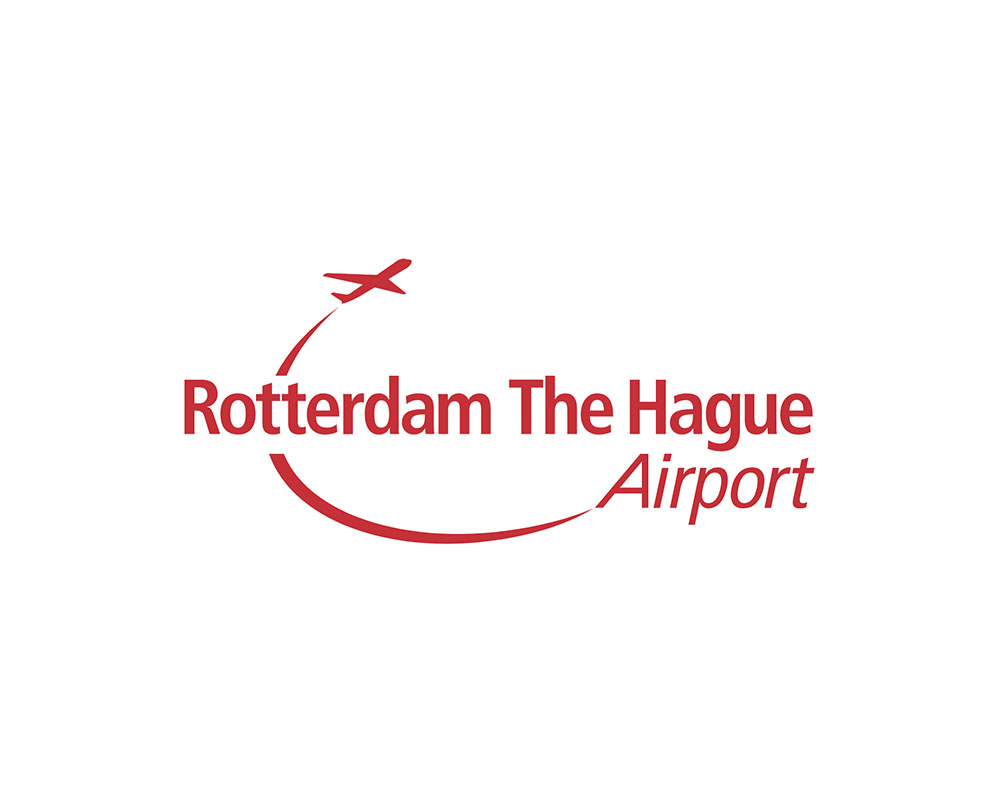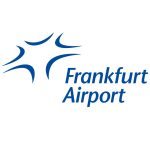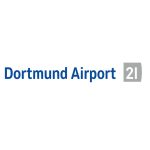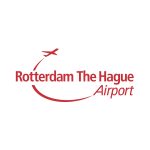Info
Description
Berlin is home to world-renowned universities, orchestras, museums, and entertainment venues, and is host to many sporting events. Its Zoological Garden is the most visited zoo in Europe and one of the most popular worldwide. With the world’s oldest large-scale movie studio complex, Berlin is an increasingly popular location for international film productions. The city is well known for its festivals, diverse architecture, nightlife, contemporary arts and a very high quality of living. Since the 2000s Berlin has seen the emergence of a cosmopolitan entrepreneurial scene. Berlin is the capital and largest city of Germany by both area and population. Its 3,723,914 (2018) inhabitants make it the second most populous city proper of the European Union after London. The city is one of Germany’s 16 federal states. It is surrounded by the state of Brandenburg, and contiguous with its capital, Potsdam. The two cities are at the center of the Berlin/Brandenburg Metropolitan Region, which is, with 6,004,857 (2015) inhabitants and an area of 30,370 square km, Germany’s third-largest metropolitan region after the Rhine-Ruhr and Rhine-Main regions. Berlin is a world city of culture, politics, media and science. Its economy is based on high-tech firms and the service sector, encompassing a diverse range of creative industries, research facilities, media corporations and convention venues. Berlin serves as a continental hub for air and rail traffic and has a highly complex public transportation network. The metropolis is a popular tourist destination. Significant industries also include IT, pharmaceuticals, biomedical engineering, clean tech, biotechnology, construction and electronics.
Book Berlin Tour
Top-rated Sights & Attractions
Brandenburg Gate
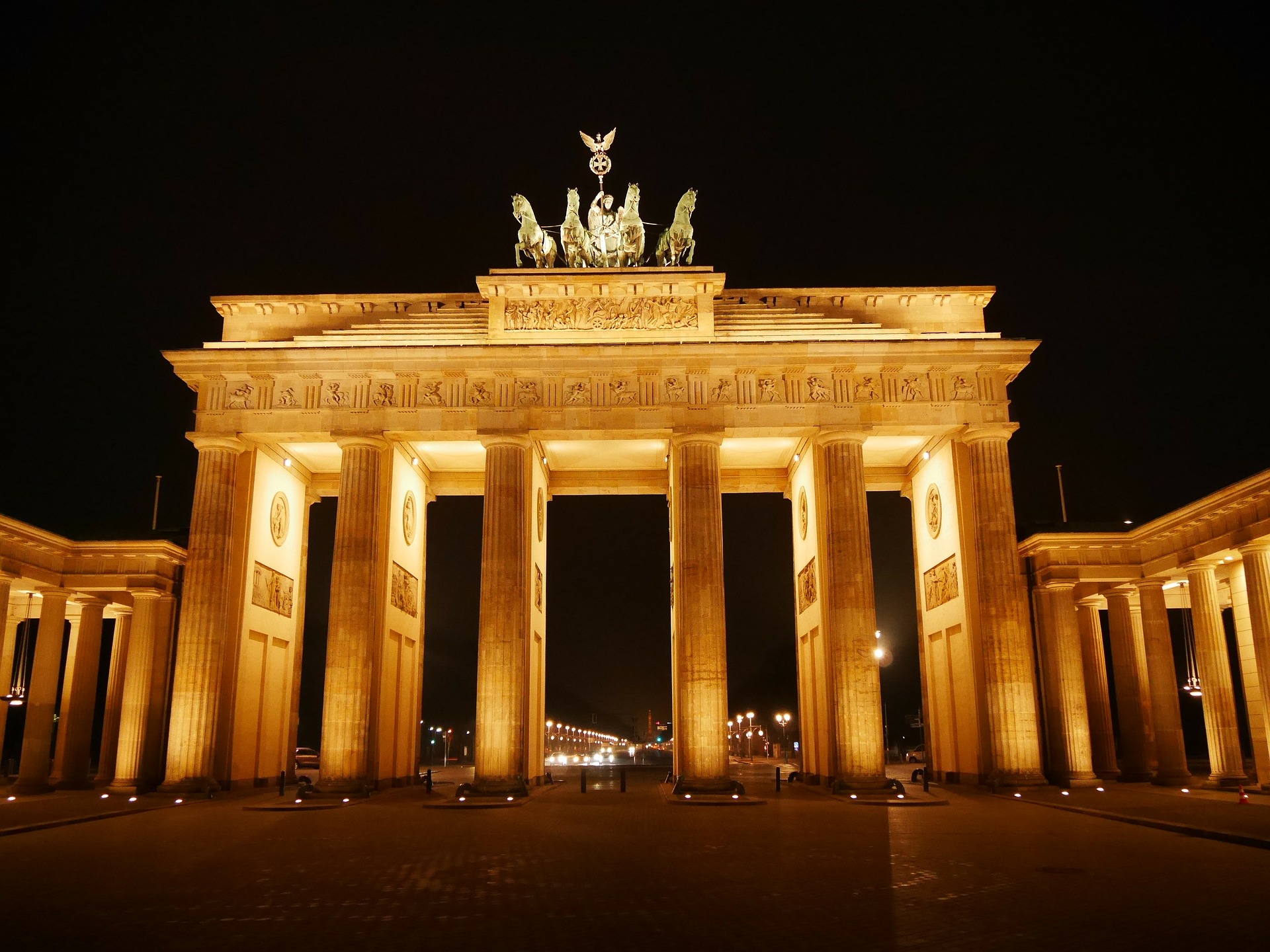 The Brandenburg Gate is an 18th-century neoclassical monument in Berlin, built on the orders of Prussian king Frederick William II after the (temporarily) successful restoration of order during the early Batavian Revolution.[1] One of the best-known landmarks of Germany, it was built on the site of a former city gate that marked the start of the road from Berlin to the town of Brandenburg an der Havel, which used to be capital of the Margraviate of Brandenburg.It is located in the western part of the city centre of Berlin within Mitte, at the junction of Unter den Linden and Ebertstraße, immediately west of the Pariser Platz. One block to the north stands the Reichstag building, which houses the German parliament (Bundestag). The gate is the monumental entry to Unter den Linden, the renowned boulevard of linden trees, which led directly to the royal City Palace of the Prussian monarchs.Throughout its existence, the Brandenburg Gate was often a site for major historical events and is today considered not only as a symbol of the tumultuous history of Europe and Germany, but also of European unity and peace.
The Brandenburg Gate is an 18th-century neoclassical monument in Berlin, built on the orders of Prussian king Frederick William II after the (temporarily) successful restoration of order during the early Batavian Revolution.[1] One of the best-known landmarks of Germany, it was built on the site of a former city gate that marked the start of the road from Berlin to the town of Brandenburg an der Havel, which used to be capital of the Margraviate of Brandenburg.It is located in the western part of the city centre of Berlin within Mitte, at the junction of Unter den Linden and Ebertstraße, immediately west of the Pariser Platz. One block to the north stands the Reichstag building, which houses the German parliament (Bundestag). The gate is the monumental entry to Unter den Linden, the renowned boulevard of linden trees, which led directly to the royal City Palace of the Prussian monarchs.Throughout its existence, the Brandenburg Gate was often a site for major historical events and is today considered not only as a symbol of the tumultuous history of Europe and Germany, but also of European unity and peace.
Berlin Wall Memorial
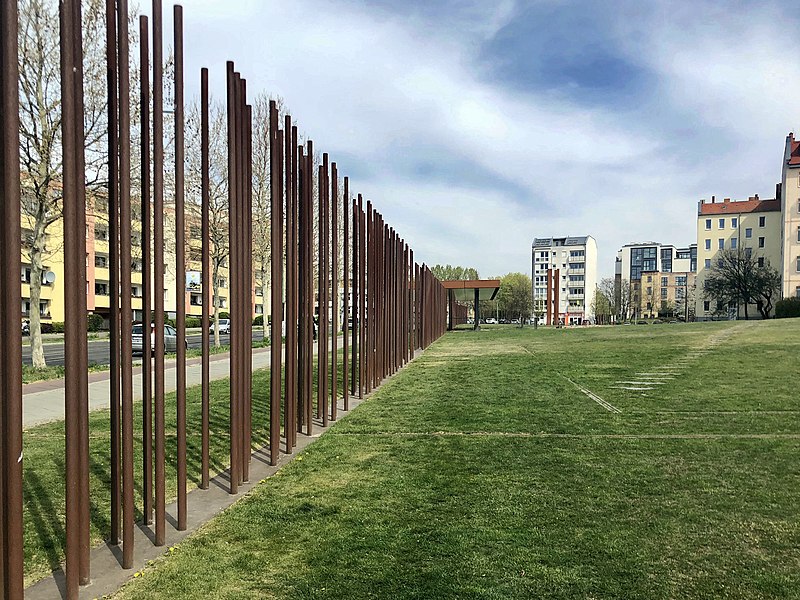 The Berlin Wall was a guarded concrete barrier that physically and ideologically divided Berlin from 1961 to 1989. Constructed by the German Democratic Republic (GDR, East Germany), starting on 13 August 1961, the Wall cut off (by land) West Berlin from virtually all of surrounding East Germany and East Berlin until government officials opened it in November 1989. Its demolition officially began on 13 June 1990 and finished in 1992. The barrier included guard towers placed along large concrete walls, accompanied by a wide area (later known as the “death strip”) that contained anti-vehicle trenches, “fakir beds” and other defenses. The Eastern Bloc portrayed the Wall as protecting its population from fascist elements conspiring to prevent the “will of the people” in building a socialist state in East Germany.
The Berlin Wall was a guarded concrete barrier that physically and ideologically divided Berlin from 1961 to 1989. Constructed by the German Democratic Republic (GDR, East Germany), starting on 13 August 1961, the Wall cut off (by land) West Berlin from virtually all of surrounding East Germany and East Berlin until government officials opened it in November 1989. Its demolition officially began on 13 June 1990 and finished in 1992. The barrier included guard towers placed along large concrete walls, accompanied by a wide area (later known as the “death strip”) that contained anti-vehicle trenches, “fakir beds” and other defenses. The Eastern Bloc portrayed the Wall as protecting its population from fascist elements conspiring to prevent the “will of the people” in building a socialist state in East Germany.
Reichstag building
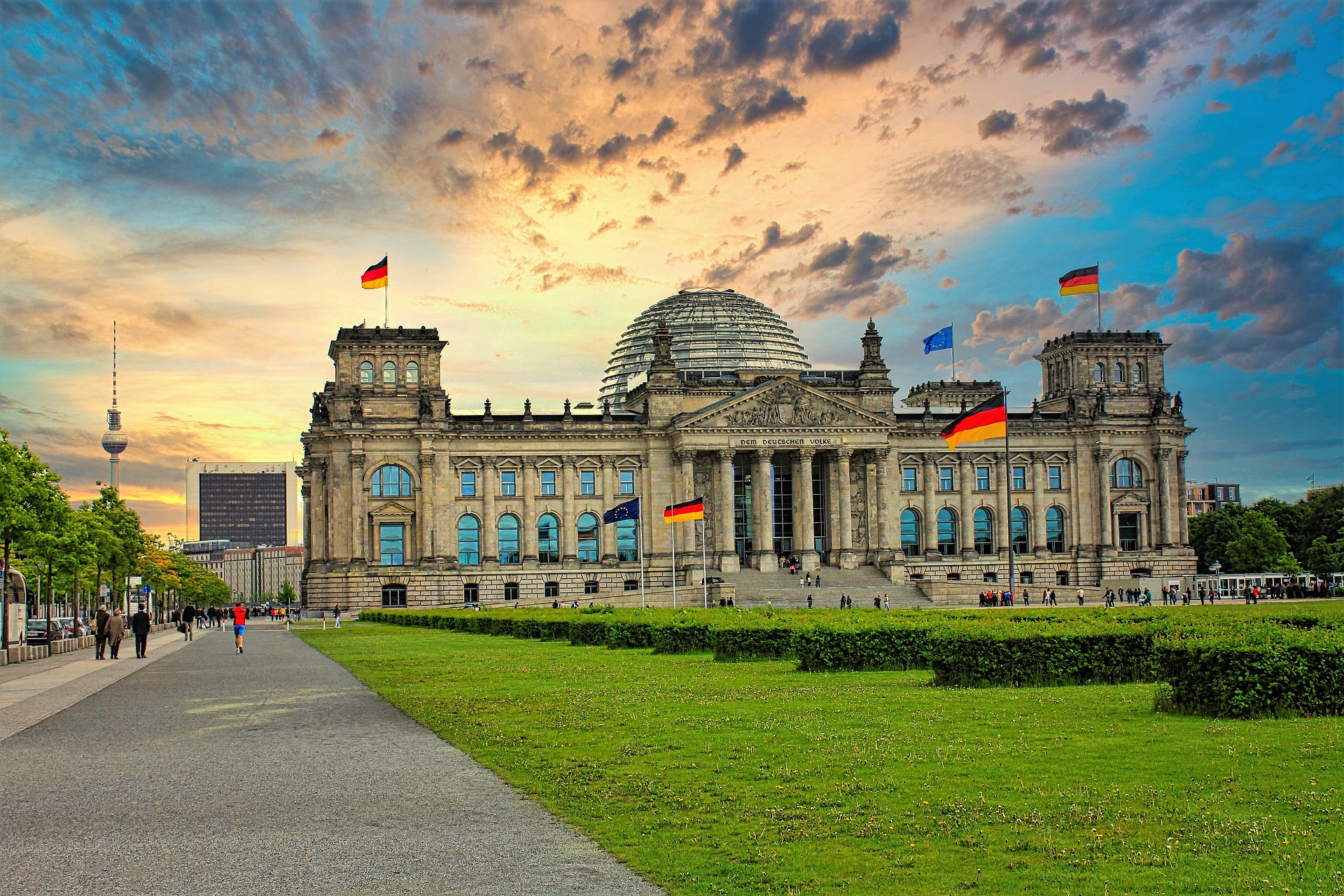 The Reichstag is a historic edifice in Berlin, Germany, constructed to house the Imperial Diet of the German Empire. It was opened in 1894 and housed the Diet until 1933, when it was severely damaged after being set on fire. After World War II, the building fell into disuse; the parliament of the German Democratic Republic (the Volkskammer) met in the Palast der Republik in East Berlin, while the parliament of the Federal Republic of Germany (the Bundestag) met in the Bundeshaus in Bonn. The ruined building was made safe against the elements and partially refurbished in the 1960s, but no attempt at full restoration was made until after German reunification on 3 October 1990, when it underwent a reconstruction led by architect Norman Foster. After its completion in 1999, it once again became the meeting place of the German parliament: the modern Bundestag. The term Reichstag, when used to connote a diet, dates back to the Holy Roman Empire. The building was built for the Diet of the German Empire, which was succeeded by the Reichstag of the Weimar Republic. The latter would become the Reichstag of Nazi Germany, which left the building (and ceased to act as a parliament) after the 1933 fire and never returned; the term Reichstag has not been used by German parliaments since World War II. In today’s usage, the word Reichstag (Imperial Diet Building) refers mainly to the building, while Bundestag (Federal Diet) refers to the institution.
The Reichstag is a historic edifice in Berlin, Germany, constructed to house the Imperial Diet of the German Empire. It was opened in 1894 and housed the Diet until 1933, when it was severely damaged after being set on fire. After World War II, the building fell into disuse; the parliament of the German Democratic Republic (the Volkskammer) met in the Palast der Republik in East Berlin, while the parliament of the Federal Republic of Germany (the Bundestag) met in the Bundeshaus in Bonn. The ruined building was made safe against the elements and partially refurbished in the 1960s, but no attempt at full restoration was made until after German reunification on 3 October 1990, when it underwent a reconstruction led by architect Norman Foster. After its completion in 1999, it once again became the meeting place of the German parliament: the modern Bundestag. The term Reichstag, when used to connote a diet, dates back to the Holy Roman Empire. The building was built for the Diet of the German Empire, which was succeeded by the Reichstag of the Weimar Republic. The latter would become the Reichstag of Nazi Germany, which left the building (and ceased to act as a parliament) after the 1933 fire and never returned; the term Reichstag has not been used by German parliaments since World War II. In today’s usage, the word Reichstag (Imperial Diet Building) refers mainly to the building, while Bundestag (Federal Diet) refers to the institution.
Museum Island
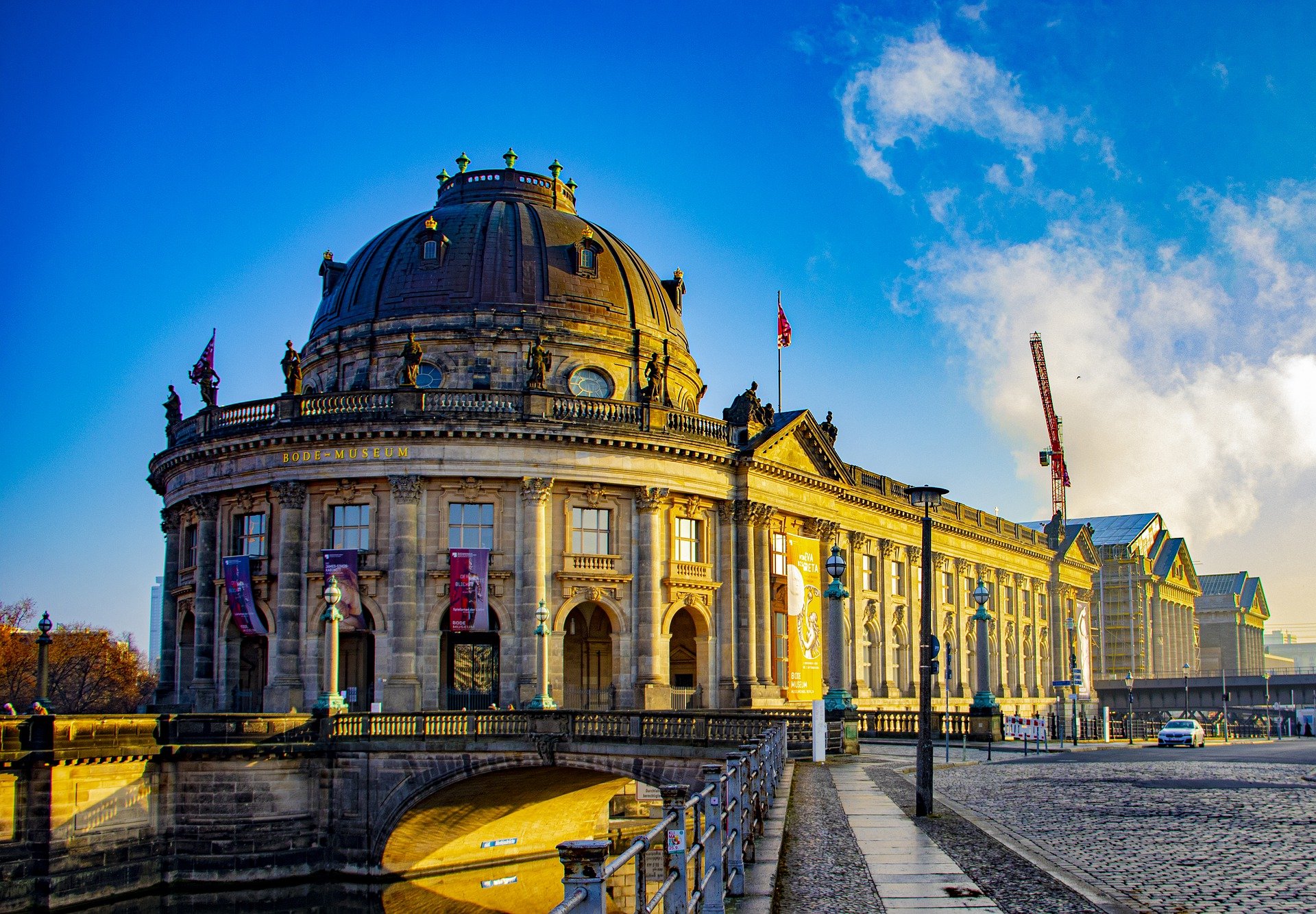 Museum Island is the name of the northern half of an island in the Spree river in the central Mitte district of Berlin, Germany, the site of the old city of Cölln. It is so-called for the complex of internationally significant museums, all part of the Berlin State Museums, that occupy the island’s northern part:
Museum Island is the name of the northern half of an island in the Spree river in the central Mitte district of Berlin, Germany, the site of the old city of Cölln. It is so-called for the complex of internationally significant museums, all part of the Berlin State Museums, that occupy the island’s northern part:
- The Altes Museum (Old Museum) named as the Königliches Museum when it was built on August 3, 1830, until it was renamed in 1841. The museum was completed on the orders of Karl Friedrich Schinkel.
- The Neues Museum (New Museum) finished in 1859 according to plans by Friedrich August Stüler, a student of Schinkel. Destroyed in World War II, it was rebuilt under the direction of David Chipperfield for the Egyptian Museum of Berlin and re-opened in 2009.
- The Alte Nationalgalerie (Old National Gallery) completed in 1876, also according to designs by Friedrich August Stüler, to host a collection of 19th-century art donated by banker Joachim H. W. Wagener
- The Bode Museum on the island’s northern tip, opened in 1904 and then called Kaiser-Friedrich-Museum. It exhibits the sculpture collections and late Antique and Byzantine art.
- The Pergamon Museum, constructed in 1930. It contains multiple reconstructed immense and historically significant buildings such as the Pergamon Altar and the Ishtar Gate of Babylon.
- The Humboldt Forum will open in 2019 in the Berlin Palace opposite the Lustgarten park, and will incorporate the Ethnological Museum of Berlin and the Museum of Asian Art; both are successor institutions of the Ancient Prussian Art Chamber, which was also located in the Berlin Palace and which was established in the mid 16th century.
Gendarmenmarkt
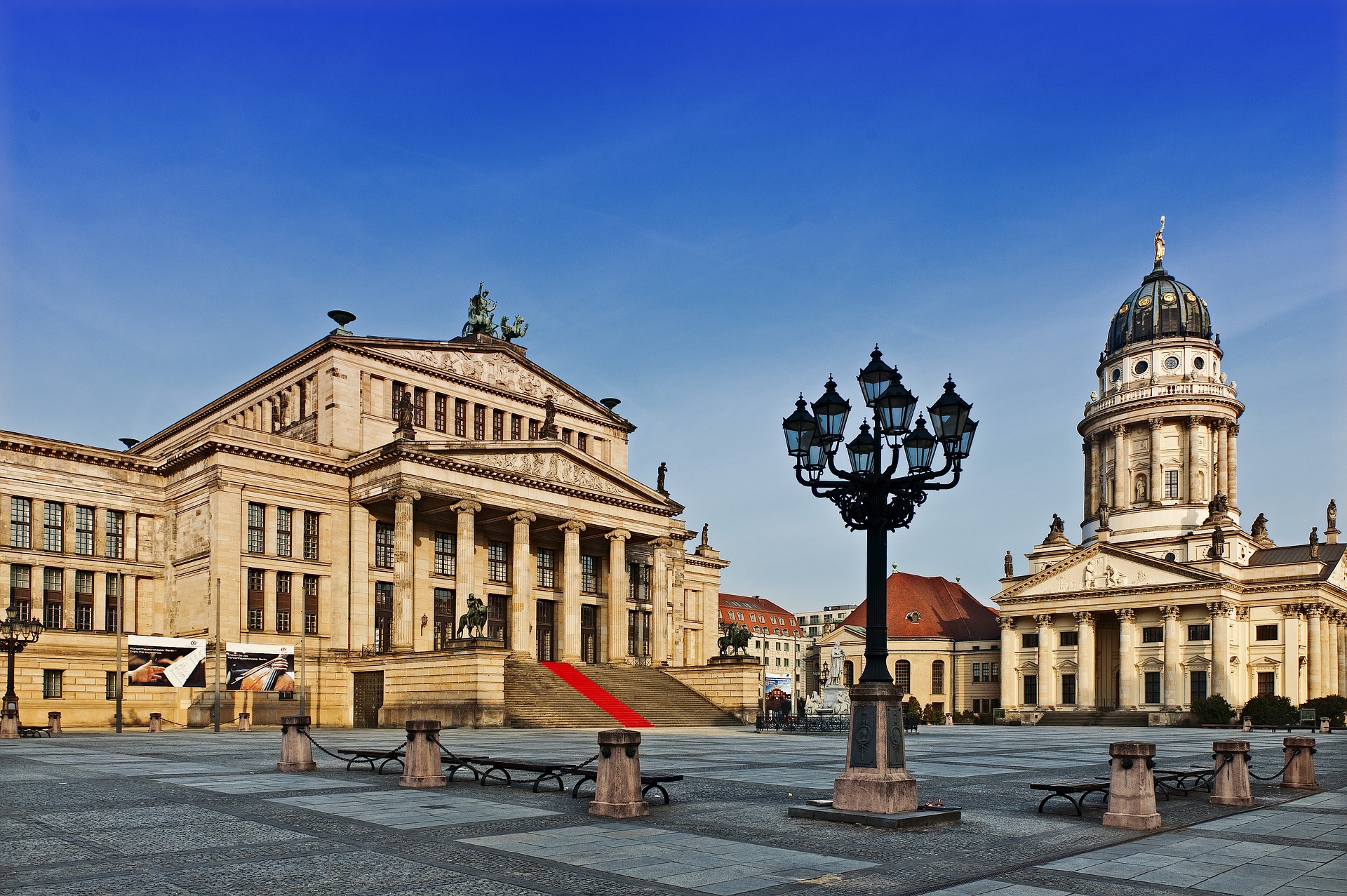 The Gendarmenmarkt is a square in Berlin and the site of an architectural ensemble including the Konzerthaus (concert hall) and the French and German Churches. In the centre of the square stands a monumental statue of Germany’s renowned poet Friedrich Schiller. The square was created by Johann Arnold Nering at the end of the seventeenth century as the Linden-Markt and reconstructed by Georg Christian Unger in 1773. The Gendarmenmarkt is named after the cuirassier regiment Gens d’Armes, which had stables at the square until 1773. During World War II, most of the buildings were badly damaged or destroyed. Today all of them have been restored. Among the pieces the museum displays are:
The Gendarmenmarkt is a square in Berlin and the site of an architectural ensemble including the Konzerthaus (concert hall) and the French and German Churches. In the centre of the square stands a monumental statue of Germany’s renowned poet Friedrich Schiller. The square was created by Johann Arnold Nering at the end of the seventeenth century as the Linden-Markt and reconstructed by Georg Christian Unger in 1773. The Gendarmenmarkt is named after the cuirassier regiment Gens d’Armes, which had stables at the square until 1773. During World War II, most of the buildings were badly damaged or destroyed. Today all of them have been restored. Among the pieces the museum displays are:
- The Pergamon Altar
- Market Gate of Miletus
- The Ishtar Gate and the Processional Way, Babylon
- The Mshatta Facade
- The Meissner fragment from the Epic of Gilgamesh.
Charlottenburg Palace
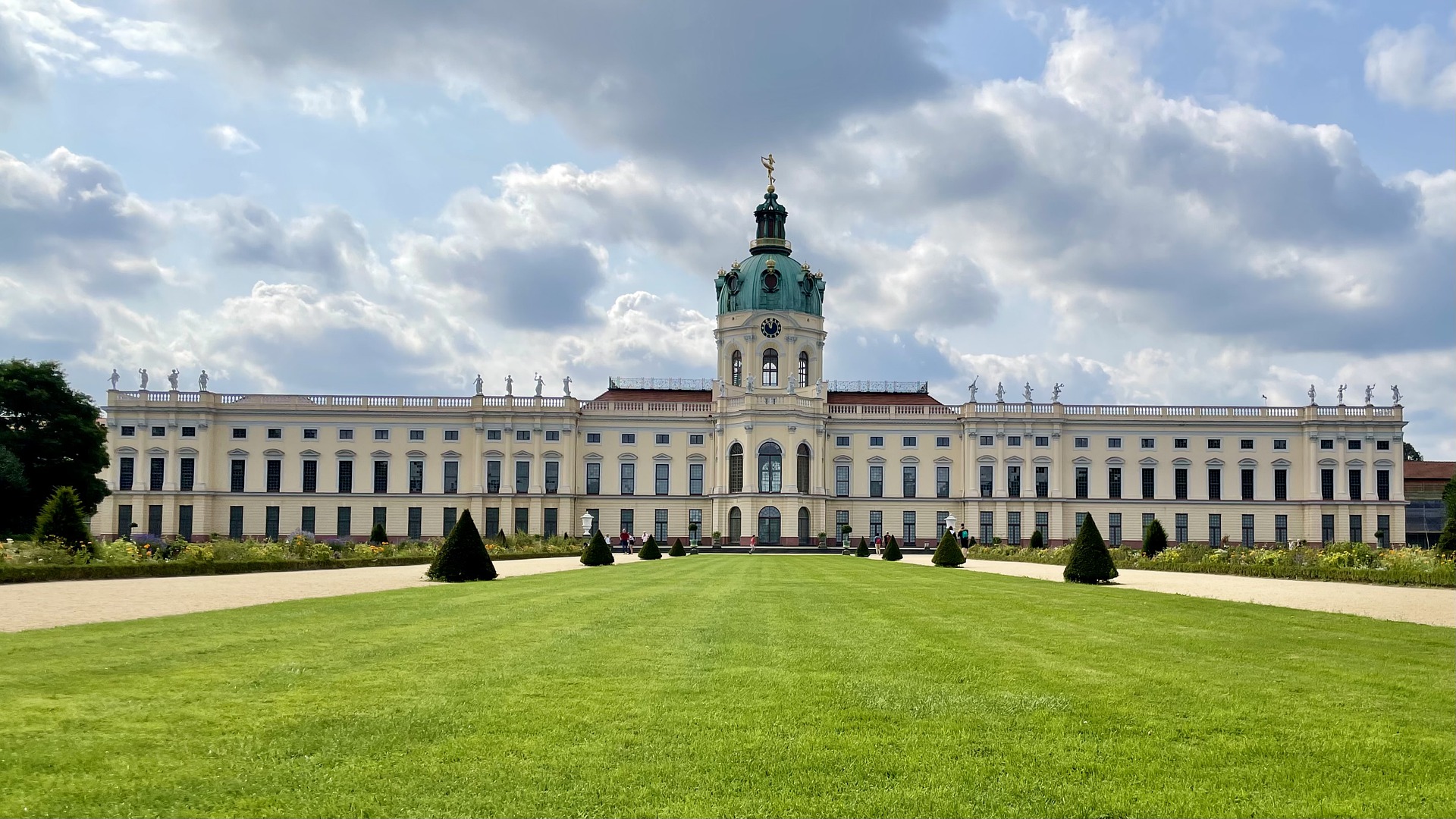 Charlottenburg Palace (German: Schloss Charlottenburg) is the largest palace in Berlin, Germany. It is in the Charlottenburg district of the Charlottenburg-Wilmersdorf borough. The palace was built at the end of the 17th century and was greatly expanded during the 18th century. It includes much lavish internal decoration in baroque and rococo styles. A large formal garden surrounded by woodland was added behind the palace, including a belvedere, a mausoleum, a theatre and a pavilion. During the Second World War, the palace was badly damaged but has since been reconstructed. The palace with its gardens are a major tourist attraction.
Charlottenburg Palace (German: Schloss Charlottenburg) is the largest palace in Berlin, Germany. It is in the Charlottenburg district of the Charlottenburg-Wilmersdorf borough. The palace was built at the end of the 17th century and was greatly expanded during the 18th century. It includes much lavish internal decoration in baroque and rococo styles. A large formal garden surrounded by woodland was added behind the palace, including a belvedere, a mausoleum, a theatre and a pavilion. During the Second World War, the palace was badly damaged but has since been reconstructed. The palace with its gardens are a major tourist attraction.
Jewish Museum Berlin
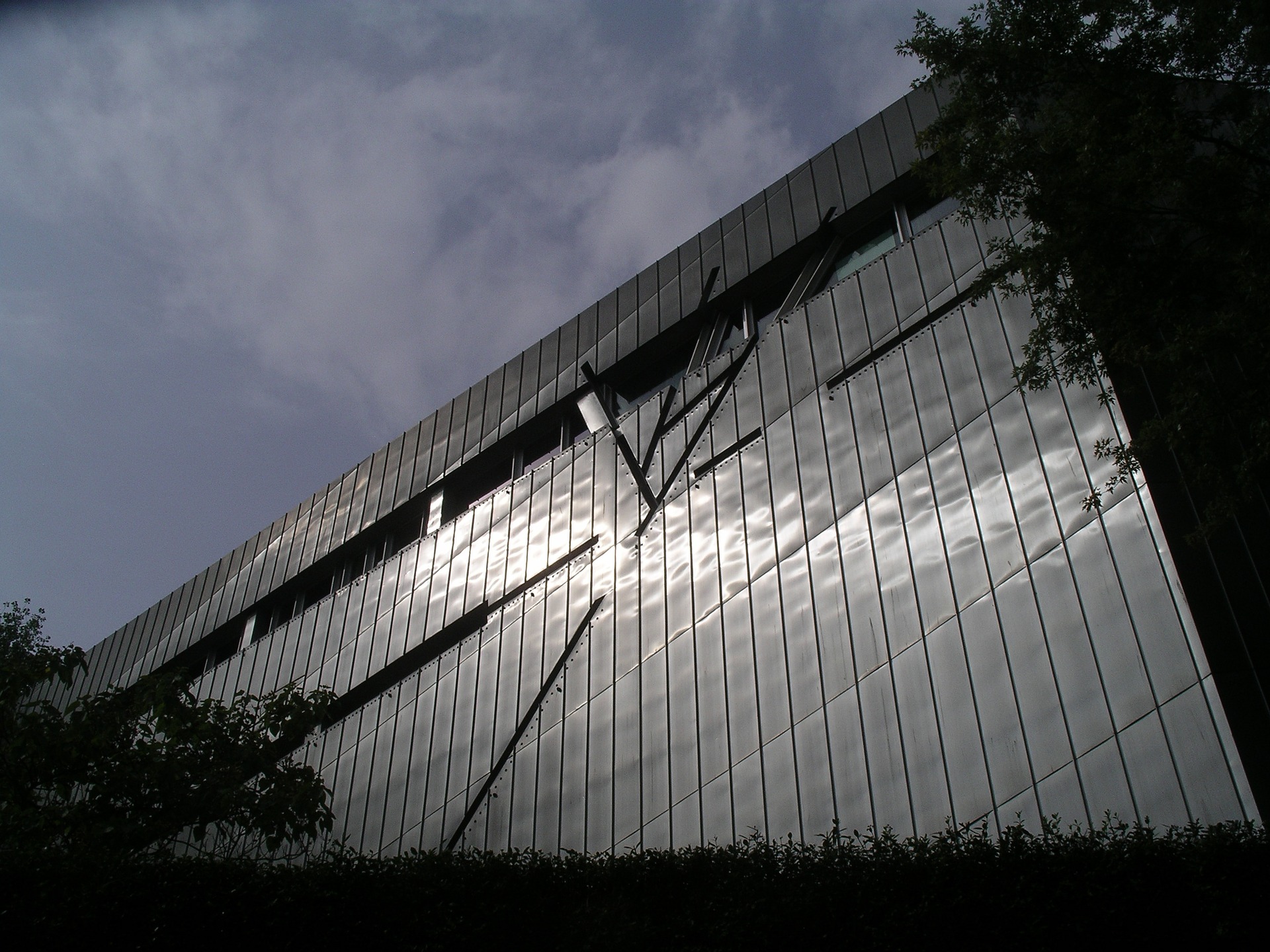 The first Jewish Museum in Berlin was founded on 24 January 1933 and was built next to the Neue Synagoge on Oranienburger Straße. In addition to curating Jewish history, it featured collections of Jewish art. The current Jewish Museum Berlin (Jüdisches Museum Berlin) was opened in 2001 and is the largest Jewish museum in Europe. It consists of three buildings, two of which are new additions specifically built for the museum by architect Daniel Libeskind. German-Jewish history is documented in the collections, the library and the archive, and is reflected in the museum’s program of events. The museum is one of Germany’s most frequented museums (more than 10.8 million visitors between 2001 and 2016). Opposite the building ensemble, the W. Michael Blumenthal Academy of the Jewish Museum Berlin was built – also after a design by Libeskind – in 2011/2012 in the former flower market hall. The archives, library, museum education department, a lecture hall and the Diaspora Garden can all be found in the academy. Princeton economist W. Michael Blumenthal, who was born in Oranienburg near Berlin and was later President Jimmy Carter’s Secretary of the Treasury, was the director of the museum from 1997 to 2014; Peter Schäfer was appointed as the new director in September 2014.
The first Jewish Museum in Berlin was founded on 24 January 1933 and was built next to the Neue Synagoge on Oranienburger Straße. In addition to curating Jewish history, it featured collections of Jewish art. The current Jewish Museum Berlin (Jüdisches Museum Berlin) was opened in 2001 and is the largest Jewish museum in Europe. It consists of three buildings, two of which are new additions specifically built for the museum by architect Daniel Libeskind. German-Jewish history is documented in the collections, the library and the archive, and is reflected in the museum’s program of events. The museum is one of Germany’s most frequented museums (more than 10.8 million visitors between 2001 and 2016). Opposite the building ensemble, the W. Michael Blumenthal Academy of the Jewish Museum Berlin was built – also after a design by Libeskind – in 2011/2012 in the former flower market hall. The archives, library, museum education department, a lecture hall and the Diaspora Garden can all be found in the academy. Princeton economist W. Michael Blumenthal, who was born in Oranienburg near Berlin and was later President Jimmy Carter’s Secretary of the Treasury, was the director of the museum from 1997 to 2014; Peter Schäfer was appointed as the new director in September 2014.
Pergamon Museum
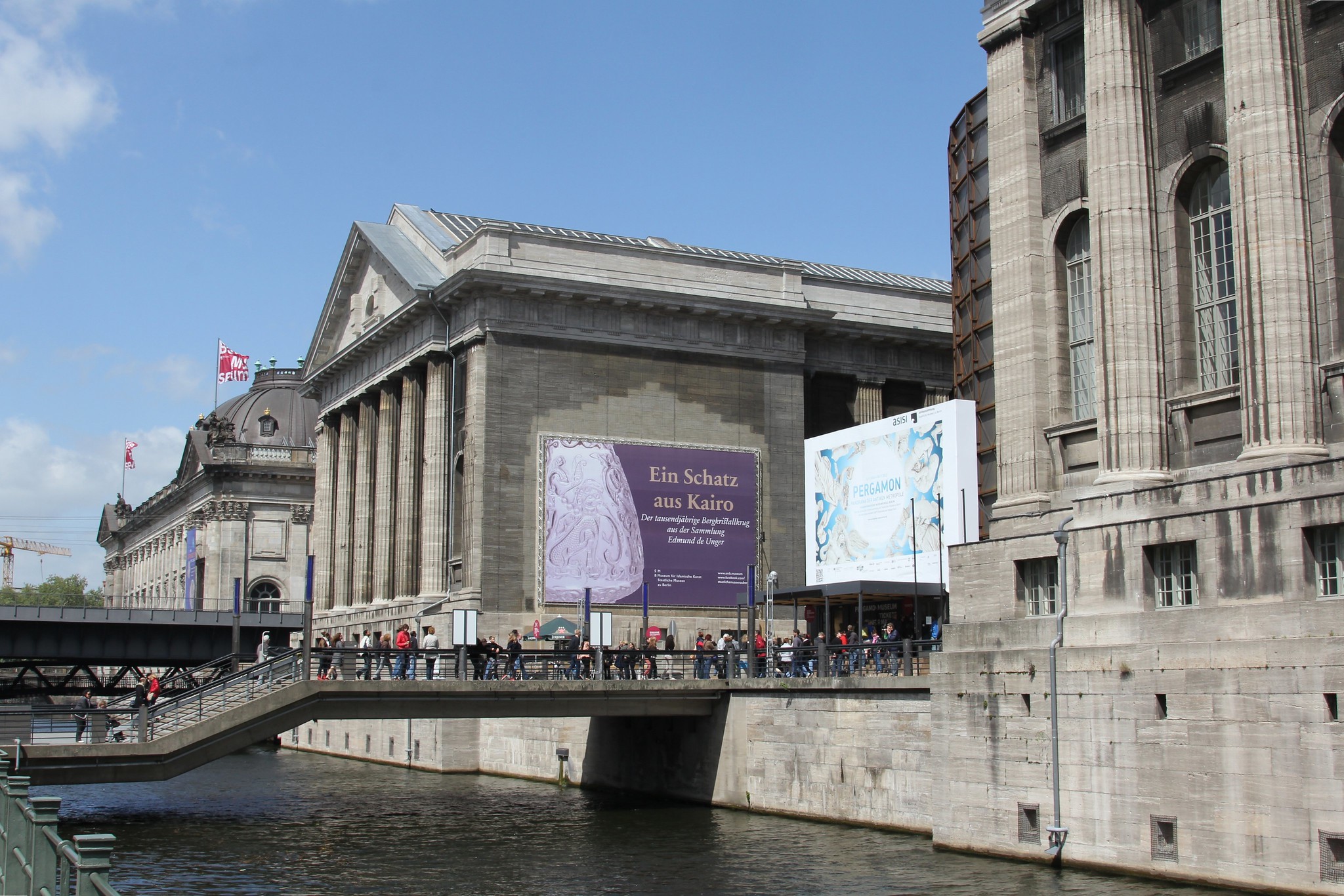 The Pergamon Museum is situated on the Museum Island in Berlin. The building was designed by Alfred Messel and Ludwig Hoffmann and was constructed over a period of twenty years, from 1910 to 1930. The Pergamon Museum houses monumental buildings such as the Pergamon Altar, the Ishtar Gate of Babylon, the Market Gate of Miletus reconstructed from the ruins found in Anatolia, as well as the Mshatta Facade. The museum is subdivided into the antiquity collection, the Middle East museum, and the museum of Islamic art. It is visited by approximately 1,135,000 people every year, making it the most visited art museum in Germany (2007), and is one of the largest in the country.
The Pergamon Museum is situated on the Museum Island in Berlin. The building was designed by Alfred Messel and Ludwig Hoffmann and was constructed over a period of twenty years, from 1910 to 1930. The Pergamon Museum houses monumental buildings such as the Pergamon Altar, the Ishtar Gate of Babylon, the Market Gate of Miletus reconstructed from the ruins found in Anatolia, as well as the Mshatta Facade. The museum is subdivided into the antiquity collection, the Middle East museum, and the museum of Islamic art. It is visited by approximately 1,135,000 people every year, making it the most visited art museum in Germany (2007), and is one of the largest in the country.
Tiergarten
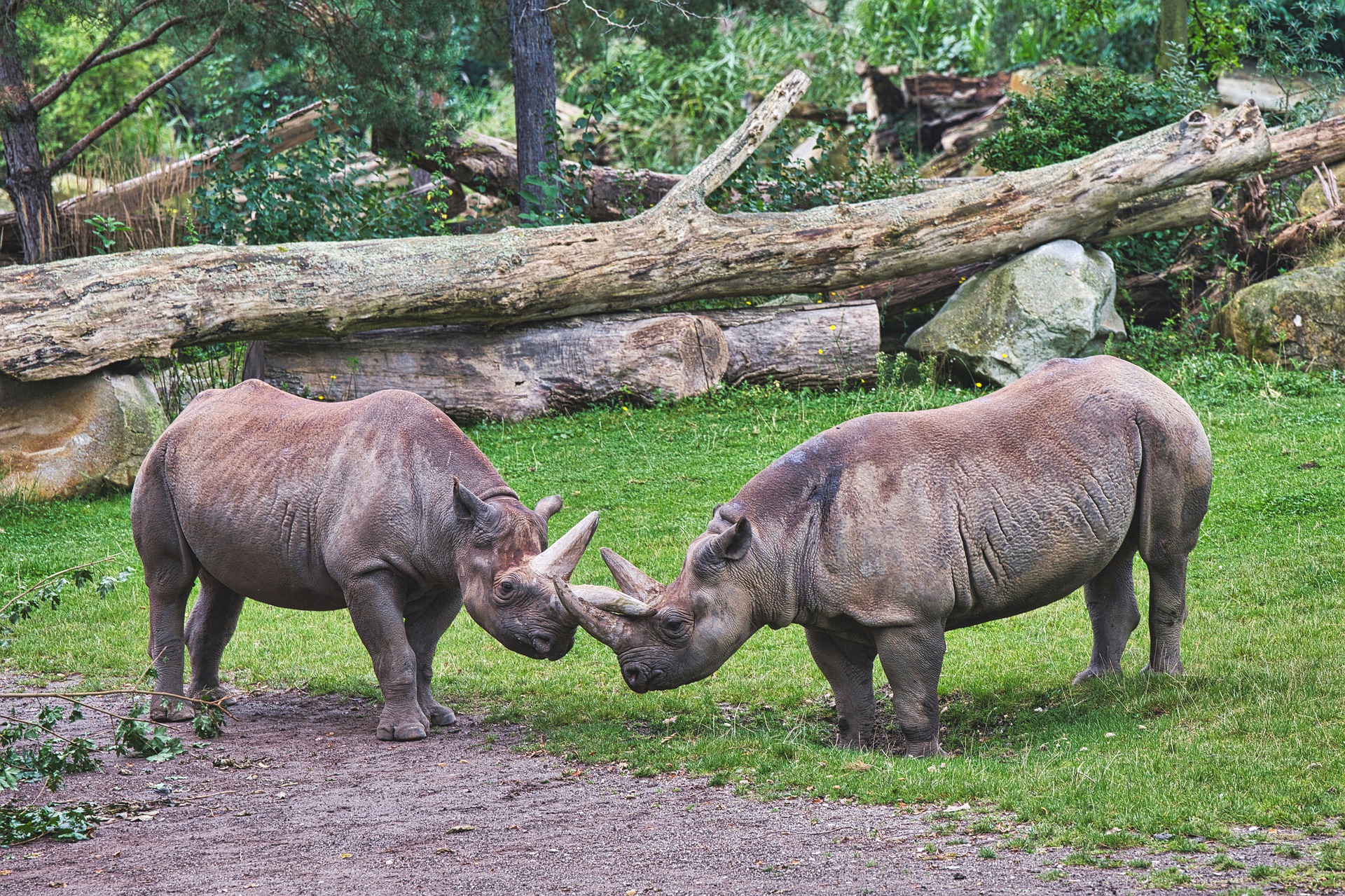 The Tiergarten is Berlin’s most popular inner-city park, located completely in the district of the same name. The park is 210 hectares (520 acres) in size and is among the largest urban gardens of Germany. Only the Tempelhofer Park (previously Berlin’s Tempelhof airport) and Munich’s Englischer Garten are larger.
The Tiergarten is Berlin’s most popular inner-city park, located completely in the district of the same name. The park is 210 hectares (520 acres) in size and is among the largest urban gardens of Germany. Only the Tempelhofer Park (previously Berlin’s Tempelhof airport) and Munich’s Englischer Garten are larger.
Berlin Victory Column
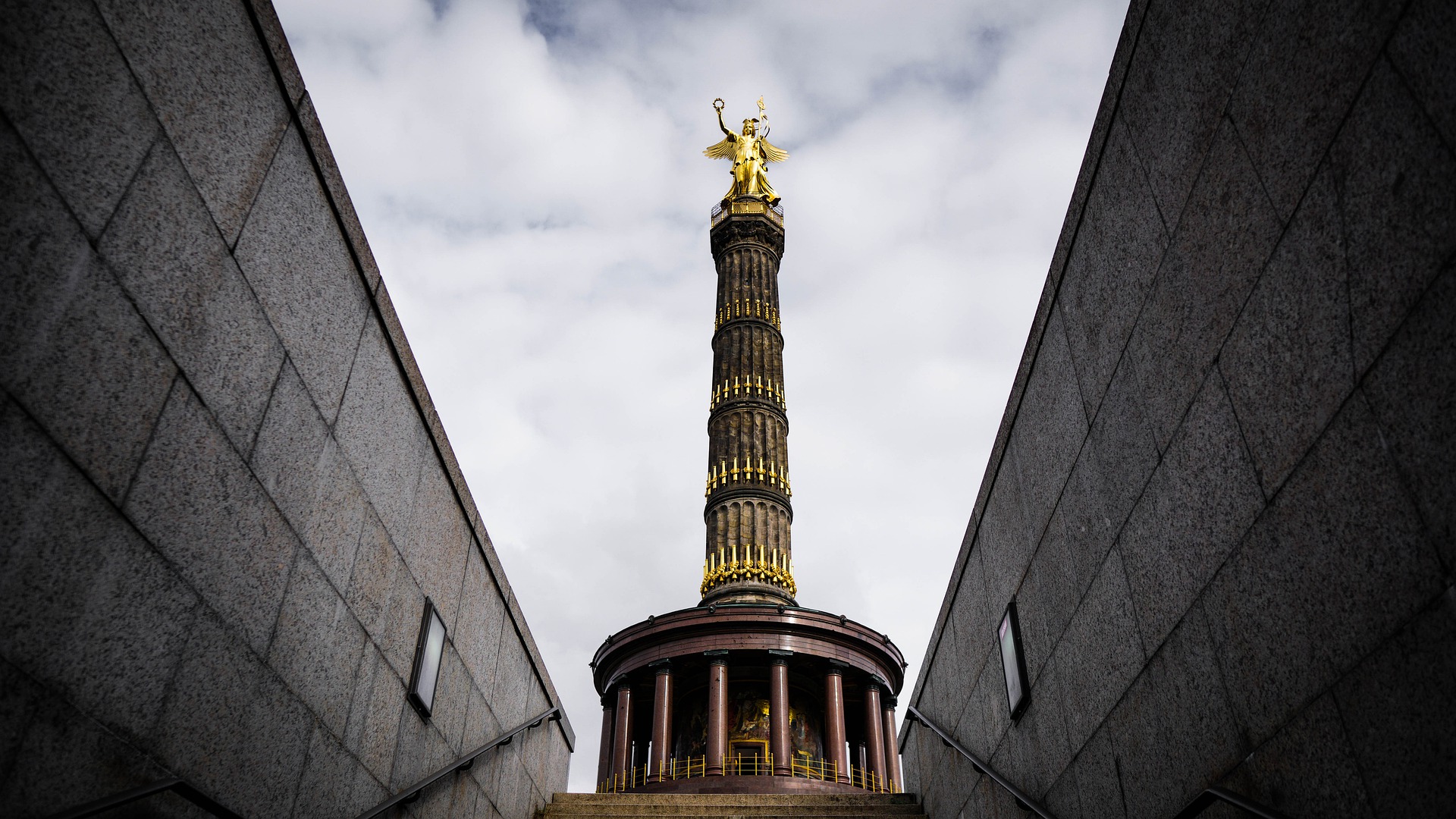 The Victory Column is a monument in Berlin, Germany. Designed by Heinrich Strack, after 1864 to commemorate the Prussian victory in the Danish-Prussian War, by the time it was inaugurated on 2 September 1873, Prussia had also defeated Austria and its German allies in the Austro-Prussian War (1866) and France in the Franco-Prussian War (1870–71), giving the statue a new purpose. Different from the original plans, these later victories in the so-called unification wars inspired the addition of the bronze sculpture of Victoria, 8.3 metres (27 ft) high and weighing 35 tonnes, designed by Friedrich Drake. Berliners have given the statue the nickname Goldelse, meaning something like “Golden Lizzy”. The Victory Column is a major tourist attraction in the city of Berlin. Its viewing platform, for which a ticket is required, offers a view over Berlin.
The Victory Column is a monument in Berlin, Germany. Designed by Heinrich Strack, after 1864 to commemorate the Prussian victory in the Danish-Prussian War, by the time it was inaugurated on 2 September 1873, Prussia had also defeated Austria and its German allies in the Austro-Prussian War (1866) and France in the Franco-Prussian War (1870–71), giving the statue a new purpose. Different from the original plans, these later victories in the so-called unification wars inspired the addition of the bronze sculpture of Victoria, 8.3 metres (27 ft) high and weighing 35 tonnes, designed by Friedrich Drake. Berliners have given the statue the nickname Goldelse, meaning something like “Golden Lizzy”. The Victory Column is a major tourist attraction in the city of Berlin. Its viewing platform, for which a ticket is required, offers a view over Berlin.
Berlin Cathedral Church
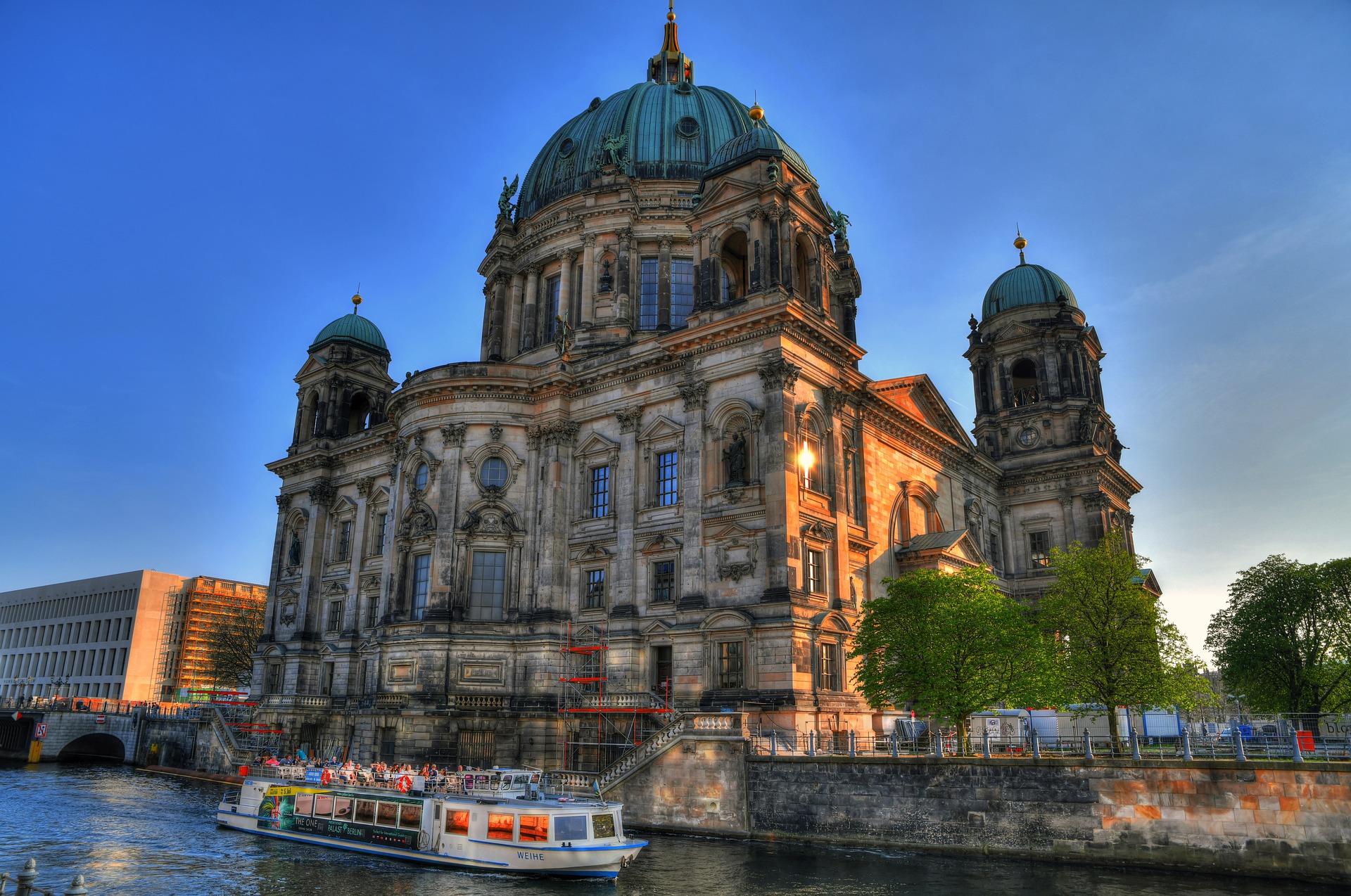 Berlin Cathedral is the short name for the Evangelical Supreme Parish and Collegiate Church in Berlin, Germany. It is located on Museum Island in the Mitte borough. The current building was finished in 1905 and is a major work of Historicist architecture of the “Kaiserzeit”. The Dom is the parish church of the congregation Gemeinde der Oberpfarr- und Domkirche zu Berlin, a member of the umbrella organisation Evangelical Church of Berlin-Brandenburg-Silesian Upper Lusatia. Berlin Cathedral has never been a cathedral in the actual sense of that term since it has never been the seat of a bishop. The bishop of the Evangelical Church in Berlin-Brandenburg (under this name 1945–2003) is based at St. Mary’s Church and Kaiser Wilhelm Memorial Church in Berlin.
Berlin Cathedral is the short name for the Evangelical Supreme Parish and Collegiate Church in Berlin, Germany. It is located on Museum Island in the Mitte borough. The current building was finished in 1905 and is a major work of Historicist architecture of the “Kaiserzeit”. The Dom is the parish church of the congregation Gemeinde der Oberpfarr- und Domkirche zu Berlin, a member of the umbrella organisation Evangelical Church of Berlin-Brandenburg-Silesian Upper Lusatia. Berlin Cathedral has never been a cathedral in the actual sense of that term since it has never been the seat of a bishop. The bishop of the Evangelical Church in Berlin-Brandenburg (under this name 1945–2003) is based at St. Mary’s Church and Kaiser Wilhelm Memorial Church in Berlin.
Topography of Terror
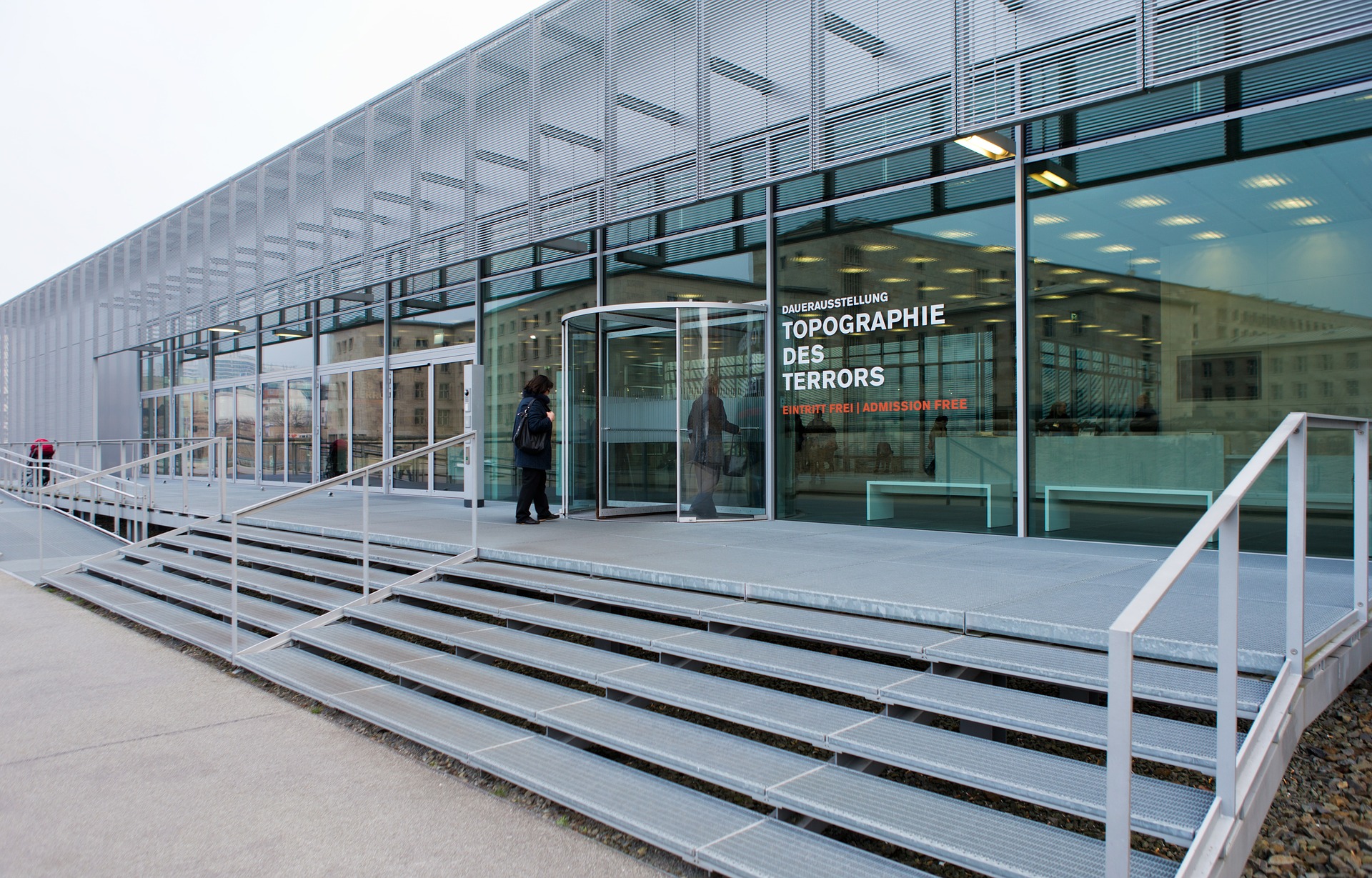 The Topography of Terror is an outdoor and indoor history museum in Berlin, Germany. It is located on Niederkirchnerstrasse, formerly Prinz-Albrecht-Strasse, on the site of buildings which during the Nazi regime from 1933 to 1945 was the SS Reich Main Security Office, the headquarters of the Sicherheitspolizei, SD, Einsatzgruppen and Gestapo. The buildings that housed the Gestapo and SS headquarters were largely destroyed by Allied bombing during early 1945 and the ruins demolished after the war. The boundary between the American and Soviet zones of occupation in Berlin ran along the Prinz-Albrecht-Strasse, so the street soon became a fortified boundary, and the Berlin Wall ran along the south side of the street, renamed Niederkirchnerstrasse, from 1961 to 1989. The wall here was never demolished. Indeed, the section adjacent to the Topography of Terror site is the longest extant segment of the outer wall (the longer East Side Gallery section in Friedrichshain being actually part of the inner wall not visible from West Berlin). The first exhibitions of the site took place in 1987, as part of Berlin’s 750th anniversary. The cellar of the Gestapo headquarters, where many political prisoners were tortured and executed, was found and excavated. The site was then turned into a memorial and museum, in the open air but protected from the elements by a canopy, detailing the history of repression under the Nazis. The excavation took place in cooperation with East German researchers, and a joint exhibition was shown both at the site and in East Germany in 1989. In 1992, two years after German reunification, a foundation was established to take care of the site, and the following year, it initiated an architectural competition to design a permanent museum. A design by architect Peter Zumthor was chosen. However, construction was stopped due to funding problems after the concrete core of the structure had been built. This stood on the site for nearly a decade until it was finally demolished in 2004 and a new building begun.
The Topography of Terror is an outdoor and indoor history museum in Berlin, Germany. It is located on Niederkirchnerstrasse, formerly Prinz-Albrecht-Strasse, on the site of buildings which during the Nazi regime from 1933 to 1945 was the SS Reich Main Security Office, the headquarters of the Sicherheitspolizei, SD, Einsatzgruppen and Gestapo. The buildings that housed the Gestapo and SS headquarters were largely destroyed by Allied bombing during early 1945 and the ruins demolished after the war. The boundary between the American and Soviet zones of occupation in Berlin ran along the Prinz-Albrecht-Strasse, so the street soon became a fortified boundary, and the Berlin Wall ran along the south side of the street, renamed Niederkirchnerstrasse, from 1961 to 1989. The wall here was never demolished. Indeed, the section adjacent to the Topography of Terror site is the longest extant segment of the outer wall (the longer East Side Gallery section in Friedrichshain being actually part of the inner wall not visible from West Berlin). The first exhibitions of the site took place in 1987, as part of Berlin’s 750th anniversary. The cellar of the Gestapo headquarters, where many political prisoners were tortured and executed, was found and excavated. The site was then turned into a memorial and museum, in the open air but protected from the elements by a canopy, detailing the history of repression under the Nazis. The excavation took place in cooperation with East German researchers, and a joint exhibition was shown both at the site and in East Germany in 1989. In 1992, two years after German reunification, a foundation was established to take care of the site, and the following year, it initiated an architectural competition to design a permanent museum. A design by architect Peter Zumthor was chosen. However, construction was stopped due to funding problems after the concrete core of the structure had been built. This stood on the site for nearly a decade until it was finally demolished in 2004 and a new building begun.
Berlin Zoological Gardens
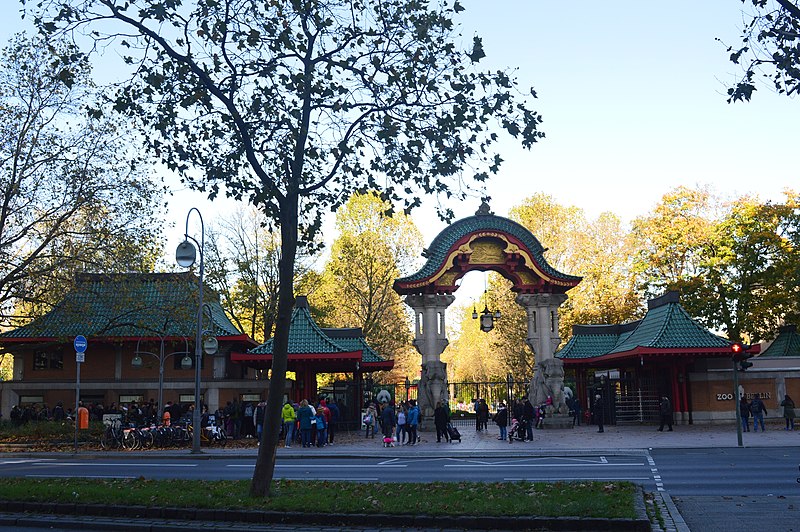 The Berlin Zoological Garden is the oldest and best-known zoo in Germany. Opened in 1844 it covers 35 hectares (86.5 acres) and is located in Berlin’s Tiergarten. With about 1,380 different species and over 20,200 animals the zoo presents one of the most comprehensive collection of species in the world. The zoo and its aquarium had more than 3.5 million visitors in 2017. It is the most-visited zoo in Europe and one of the most popular worldwide. Regular animal feedings are among its most famous attractions. Globally known animals like Knut, the polar bear, and Bao Bao, the giant panda have contributed to the zoo’s public image. The zoo collaborates with many universities, research institutes, and other zoos around the world. It maintains and promotes European breeding programmes, helps safeguard several endangered species, and participates in several species reintroduction programs.
The Berlin Zoological Garden is the oldest and best-known zoo in Germany. Opened in 1844 it covers 35 hectares (86.5 acres) and is located in Berlin’s Tiergarten. With about 1,380 different species and over 20,200 animals the zoo presents one of the most comprehensive collection of species in the world. The zoo and its aquarium had more than 3.5 million visitors in 2017. It is the most-visited zoo in Europe and one of the most popular worldwide. Regular animal feedings are among its most famous attractions. Globally known animals like Knut, the polar bear, and Bao Bao, the giant panda have contributed to the zoo’s public image. The zoo collaborates with many universities, research institutes, and other zoos around the world. It maintains and promotes European breeding programmes, helps safeguard several endangered species, and participates in several species reintroduction programs.
Berlin-Dahlem Botanical Garden and Museum
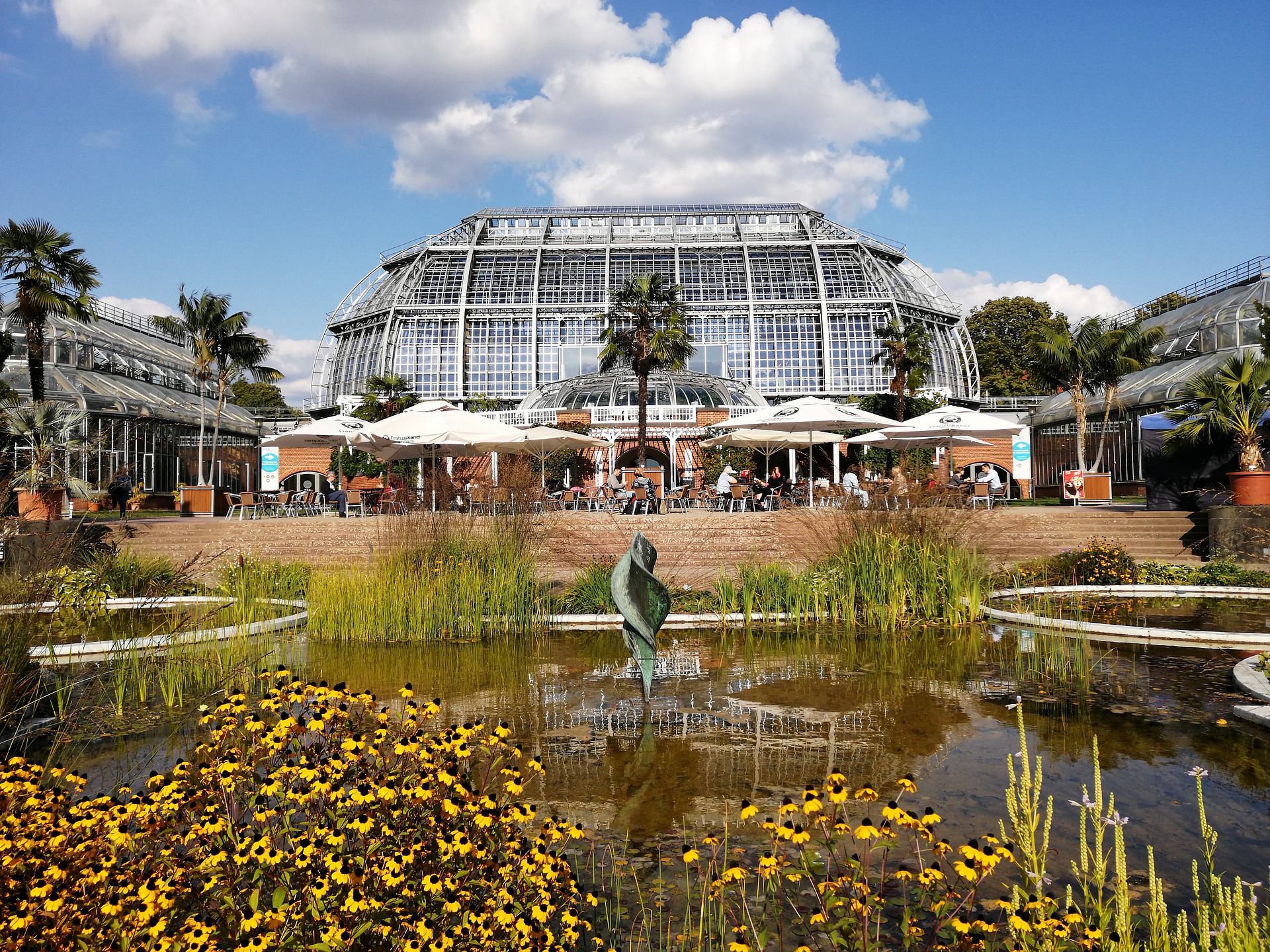 The Berlin-Dahlem Botanical Garden and Botanical Museum is a botanical garden in the German capital city of Berlin, with an area of 43 hectares and around 22,000 different plant species. It was constructed between 1897 and 1910, under the guidance of architect Adolf Engler, in order to present exotic plants returned from German colonies. The garden is located in the Lichterfelde locality of the borough of Steglitz-Zehlendorf. When it was founded, a part of it was located in Dahlem, a fact that is still reflected in its name. This part of Dahlem became part of Lichterfelde in 1938. Today, the garden is part of the Free University of Berlin. The Botanical Museum (Botanisches Museum), with a large herbarium (Herbarium Berolinense) and a large scientific library, is attached to the garden. The complex consists of several buildings and glass-houses, such as the Cactus Pavilion and the Pavilion Victoria (which features a collection of orchids, carnivorous plants and giant white water lily Victoria-Seerosen). The total area of all glass-houses is 6,000 m². The garden’s open-air areas, sorted by geographical origin, have a total area of 13 hectares. The garden’s arboretum is 14 hectares. The best-known part of the garden is the Great Pavilion (Großes Tropenhaus). The temperature inside is maintained at 30 °C and air humidity is kept high. Among the many tropical plants it hosts a giant bamboo.
The Berlin-Dahlem Botanical Garden and Botanical Museum is a botanical garden in the German capital city of Berlin, with an area of 43 hectares and around 22,000 different plant species. It was constructed between 1897 and 1910, under the guidance of architect Adolf Engler, in order to present exotic plants returned from German colonies. The garden is located in the Lichterfelde locality of the borough of Steglitz-Zehlendorf. When it was founded, a part of it was located in Dahlem, a fact that is still reflected in its name. This part of Dahlem became part of Lichterfelde in 1938. Today, the garden is part of the Free University of Berlin. The Botanical Museum (Botanisches Museum), with a large herbarium (Herbarium Berolinense) and a large scientific library, is attached to the garden. The complex consists of several buildings and glass-houses, such as the Cactus Pavilion and the Pavilion Victoria (which features a collection of orchids, carnivorous plants and giant white water lily Victoria-Seerosen). The total area of all glass-houses is 6,000 m². The garden’s open-air areas, sorted by geographical origin, have a total area of 13 hectares. The garden’s arboretum is 14 hectares. The best-known part of the garden is the Great Pavilion (Großes Tropenhaus). The temperature inside is maintained at 30 °C and air humidity is kept high. Among the many tropical plants it hosts a giant bamboo.
Kaiser Wilhelm Memorial Church
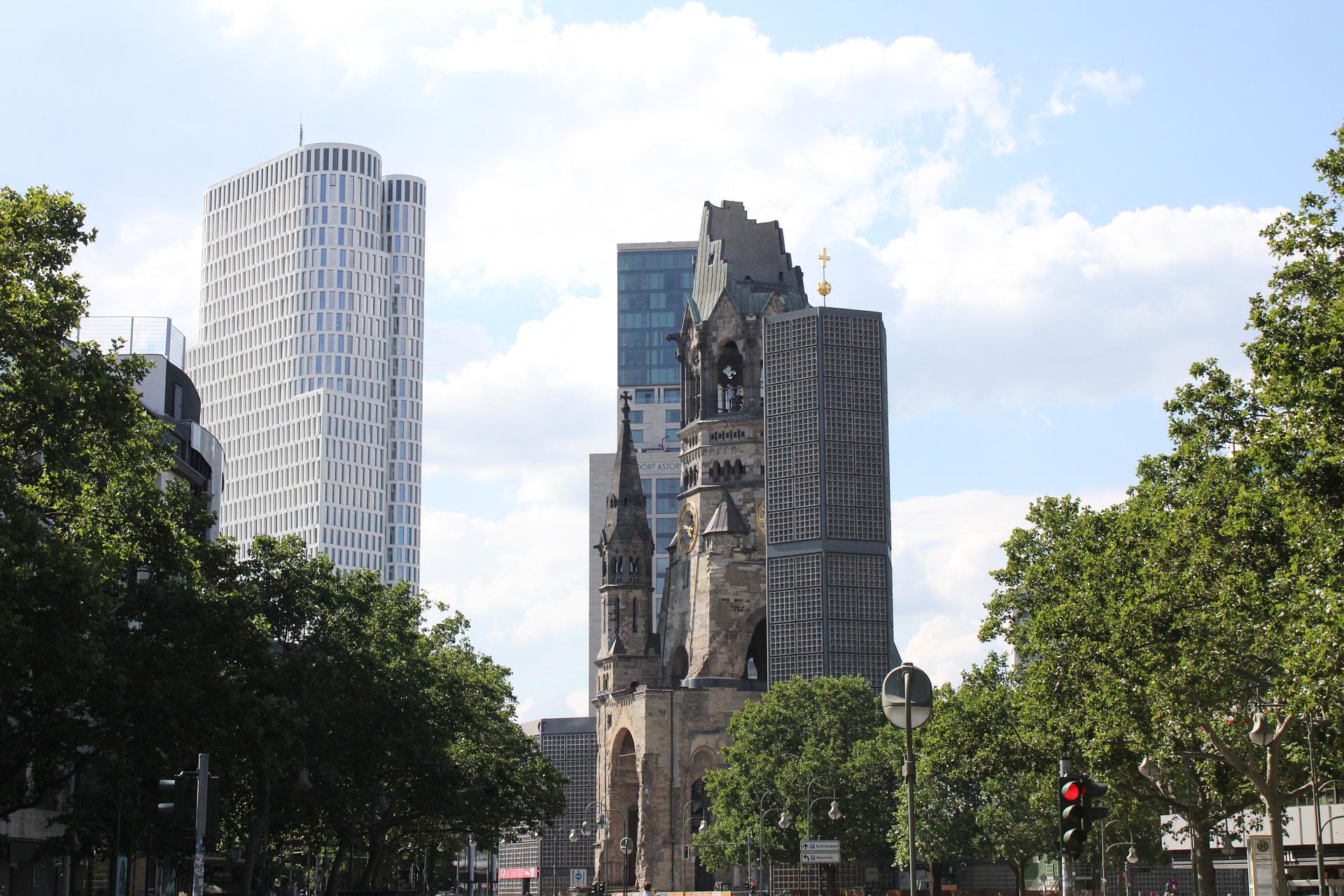 The Kaiser Wilhelm Memorial Church is a Protestant church affiliated with the Evangelical Church in Berlin, Brandenburg and Silesian Upper Lusatia, a regional body of the Evangelical Church in Germany. It is located in Berlin on the Kurfürstendamm in the centre of the Breitscheidplatz. The original church on the site was built in the 1890s. It was badly damaged in a bombing raid in 1943. The present building, which consists of a church with an attached foyer and a separate belfry with an attached chapel, was built between 1959 and 1963. The damaged spire of the old church has been retained and its ground floor has been made into a memorial hall. The Memorial Church today is a famous landmark of western Berlin, and is nicknamed by Berliners “der hohle Zahn”, meaning “the hollow tooth”.
The Kaiser Wilhelm Memorial Church is a Protestant church affiliated with the Evangelical Church in Berlin, Brandenburg and Silesian Upper Lusatia, a regional body of the Evangelical Church in Germany. It is located in Berlin on the Kurfürstendamm in the centre of the Breitscheidplatz. The original church on the site was built in the 1890s. It was badly damaged in a bombing raid in 1943. The present building, which consists of a church with an attached foyer and a separate belfry with an attached chapel, was built between 1959 and 1963. The damaged spire of the old church has been retained and its ground floor has been made into a memorial hall. The Memorial Church today is a famous landmark of western Berlin, and is nicknamed by Berliners “der hohle Zahn”, meaning “the hollow tooth”.
Nikolaiviertel
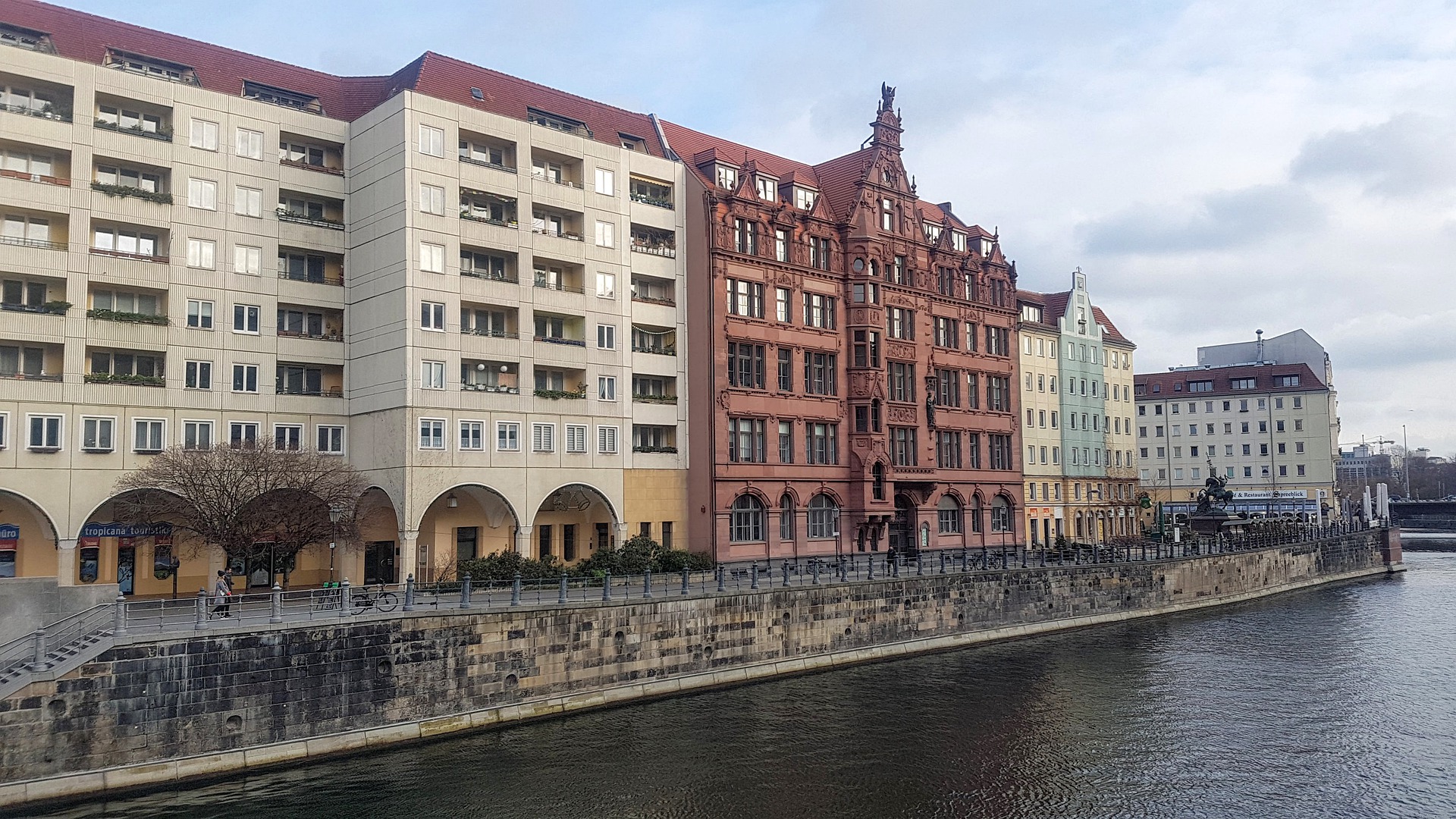 Berlin’s Nikolai Quarter (Nikolaiviertel) is in the heart of the old city, and is where you’ll find many of its oldest and most popular attractions, as well as plenty of things to do. This pedestrian-friendly quarter is known for its many small buildings set along narrow streets full of nooks and crannies, home to restaurants, cafés, shops, and craft workshops selling everything from basketry to wooden crafts. Highlights include the district’s many old fountains, lanterns, and lattice-windows on the older houses and historic buildings such as Ephraim Palace, built in the 1760s, which has exhibits dedicated to Berlin’s rich artistic and cultural history as well as an exquisite grand staircase. Also of note is Knoblauch House, built in 1760 and representative of the former homes of the city’s wealthy Jewish merchants and tradesmen.
Berlin’s Nikolai Quarter (Nikolaiviertel) is in the heart of the old city, and is where you’ll find many of its oldest and most popular attractions, as well as plenty of things to do. This pedestrian-friendly quarter is known for its many small buildings set along narrow streets full of nooks and crannies, home to restaurants, cafés, shops, and craft workshops selling everything from basketry to wooden crafts. Highlights include the district’s many old fountains, lanterns, and lattice-windows on the older houses and historic buildings such as Ephraim Palace, built in the 1760s, which has exhibits dedicated to Berlin’s rich artistic and cultural history as well as an exquisite grand staircase. Also of note is Knoblauch House, built in 1760 and representative of the former homes of the city’s wealthy Jewish merchants and tradesmen.


